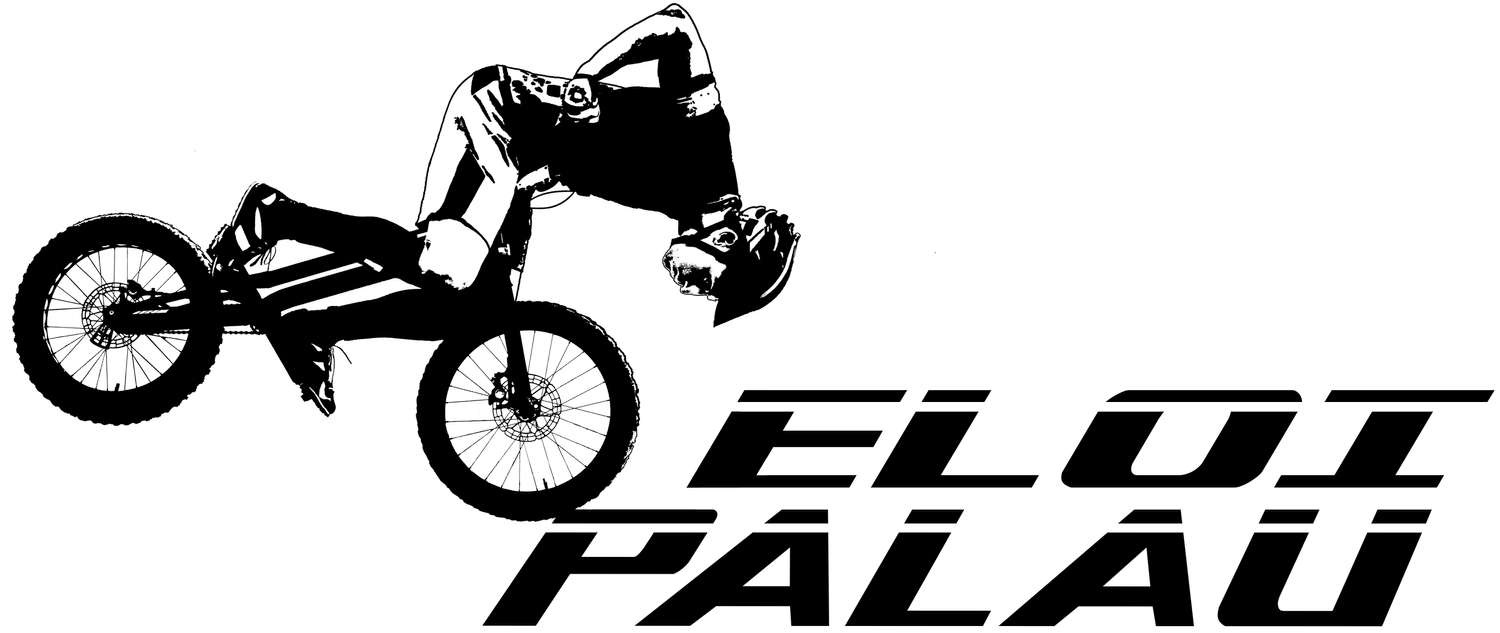The Moroccan Adventure

The adventure began in the province of Guelmim, in the south of Morocco. Pol and I started with a short route that ended at Legzira Beach, where we met up with Rai and Guille, our cameramen. The beach is famous for its arches, carved out over thousands of years by the erosion of seawater—though today, only one remains standing. Still, the place is absolutely stunning.
The next day, before heading up to Akhiam Cave, we made a planned stop in Tafraoute, a small commercial town in the heart of Berber country. It’s located in the Ameln Valley, a beautiful area full of rock formations that seemed perfect for some trial fun. Back in 1985, the Belgian artist Jean Verame created a massive art installation here, painting huge boulders in shades of blue and pink. But when we arrived, many of the rocks were covered in graffiti and crowded with French tourists, so we decided to find a more natural and secluded spot. And what we discovered was a hidden gem—none of us imagined we’d find such a place in Morocco.






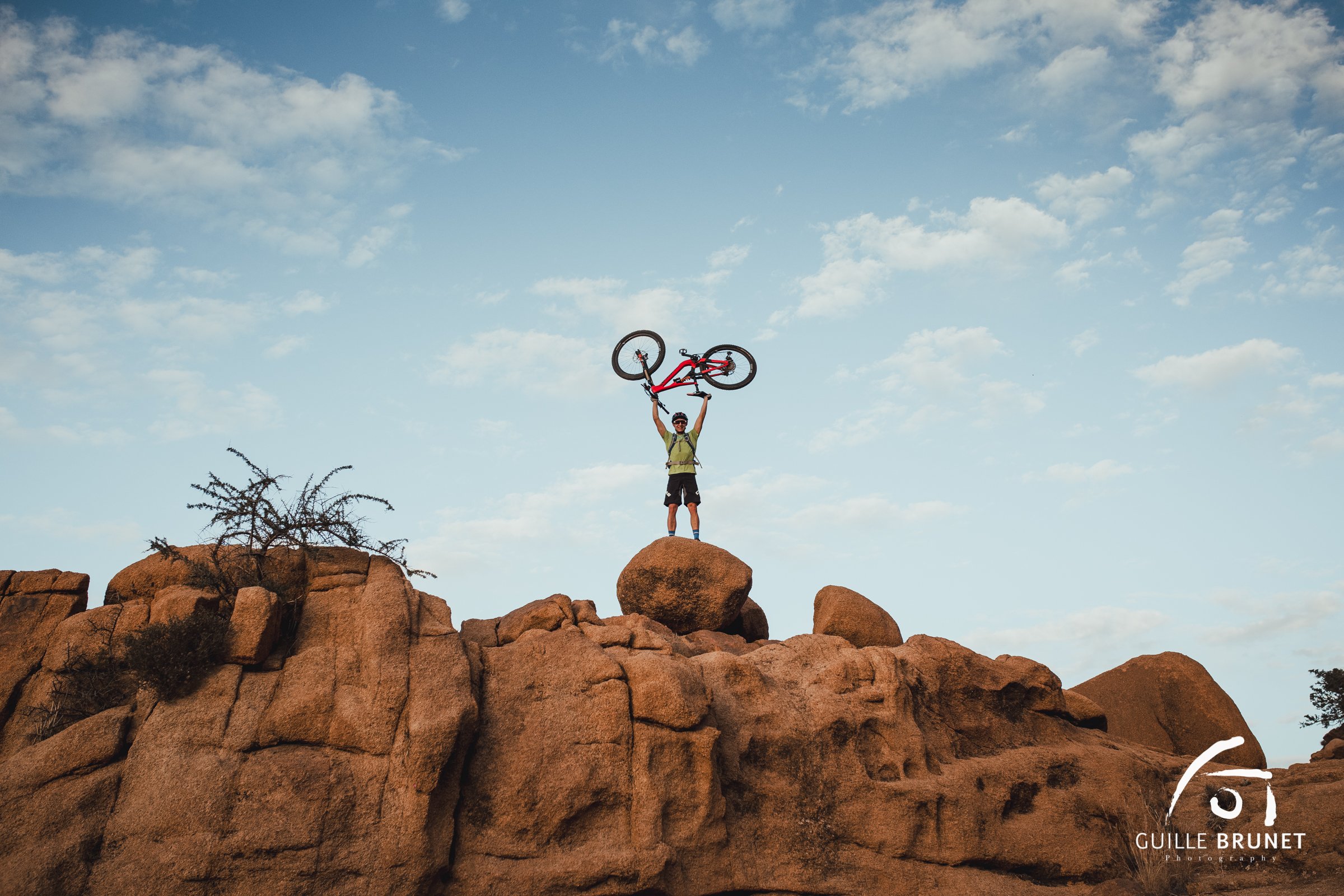





On the way to Akhiam Cave in the Anti-Atlas mountains, we stopped in a small village. Pol and I played a bit of football with the local kids and later pulled out the bikes. When we started doing tricks, the kids were amazed at what we could do on two wheels.
That night, we stayed at a hostel in Agoudal. The next morning, Pol and I rode about 20 km before meeting the crew at the Akhiam Cave. We didn’t actually enter the cave since the hostel owner warned us it wasn’t very safe, but we still had a blast riding and exploring the almost lunar landscape around it.
Our next stop was Erfoud, to visit the khettaras and the old Portuguese prison, which Pol and Rai had seen during their Uniraid trip. The khettaras are an ancient water collection system, and on the surface, they create these little mounds that look like mini jumps from a bike park. The so-called "Portuguese prison" was actually a rainwater storage system built by Sub-Saharan African slaves in the early 19th century. Later, these slaves were sold to Portugal, hence the name. There’s a small trail that leads up to a lookout point with absolutely breathtaking views.
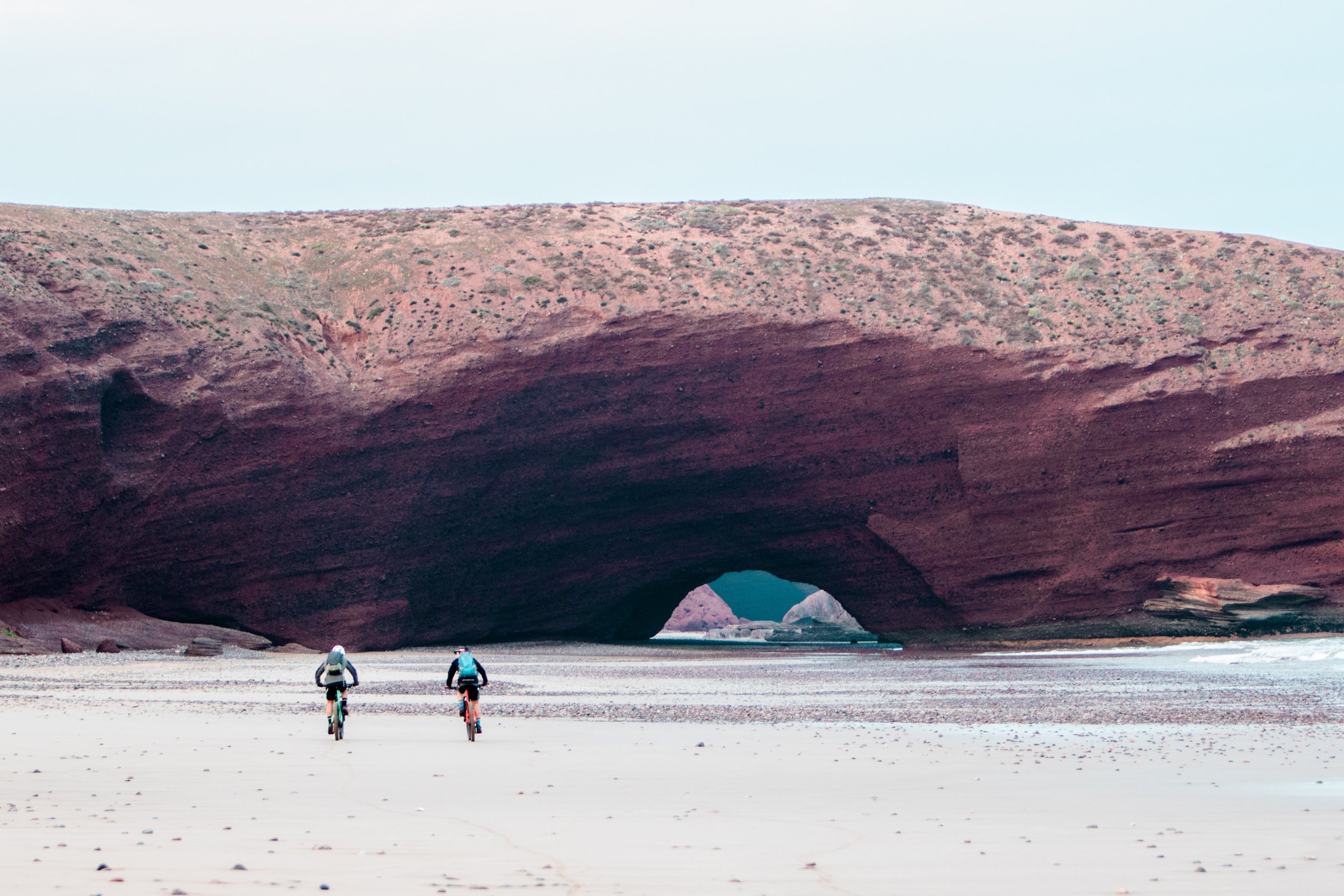

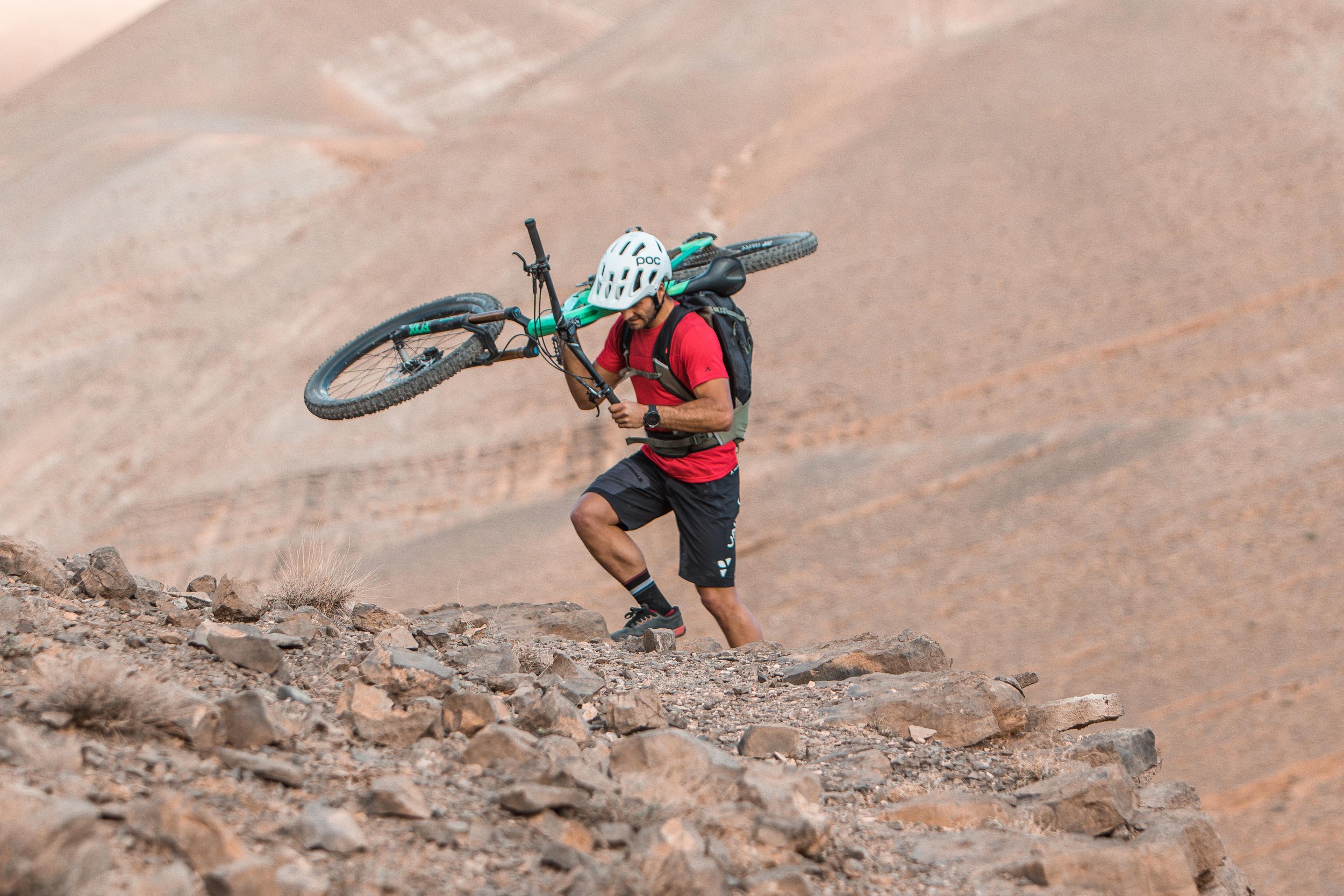
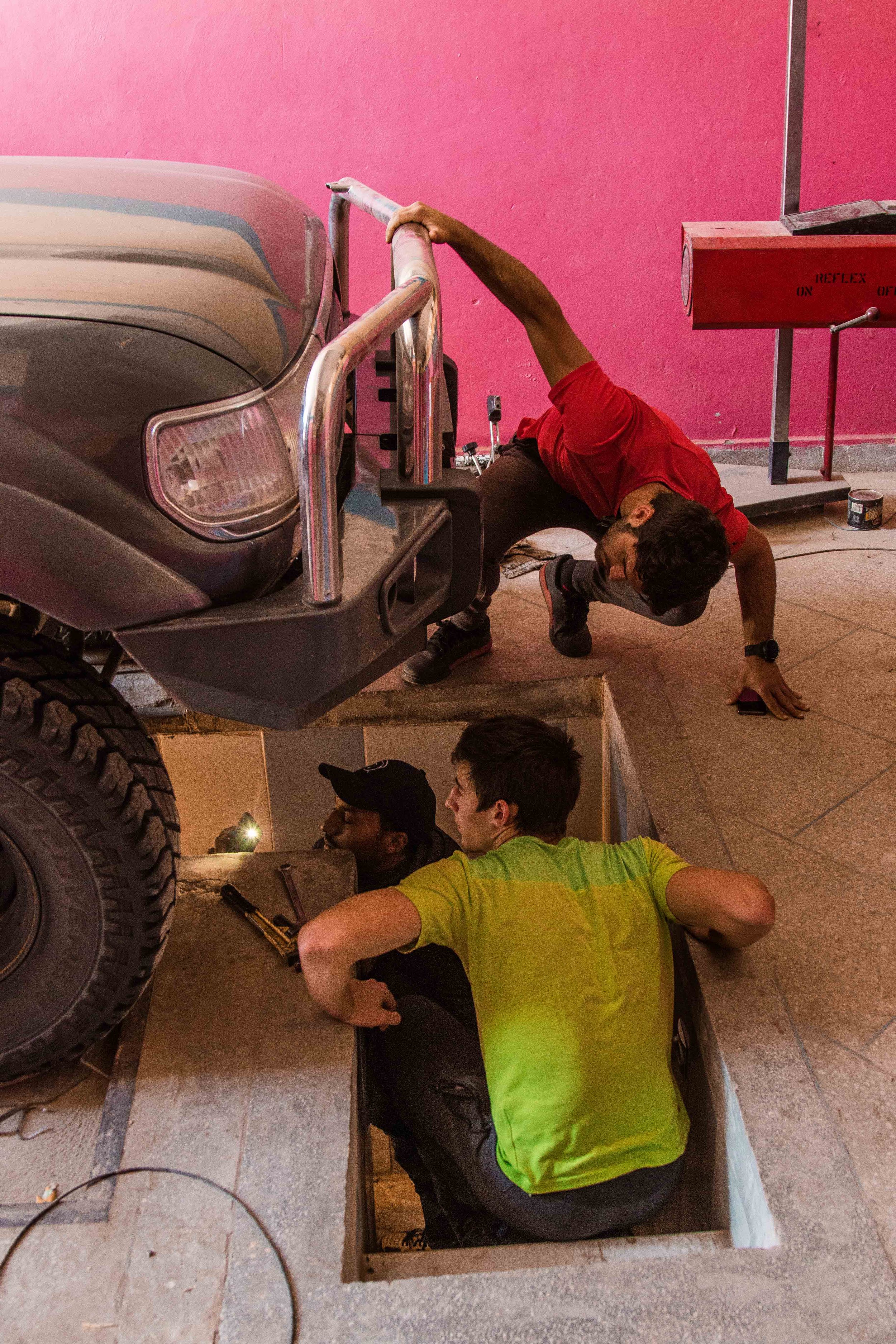





Sticking to our plan, we headed to Merzouga and spent the night in a desert camp. The next morning, we were excited to try riding the bikes on the dunes, even though we had no idea what to expect—none of us had ever ridden on sand before. But right after breakfast, we noticed that the car had a broken bolt on the left rear wheel and the differential was leaking oil. We had to return to Erfoud to get it fixed, or we wouldn’t be able to continue the trip.
By the time we got back to the camp, a sandstorm had started. We had no choice but to stay inside the haimas, playing cards and sharing stories with the camp staff, waiting for the storm to pass. It lasted the entire day—we couldn’t go out at all. The next day, the wind was still blowing hard, but Pol said we had to try. "We don’t know when we’ll get another chance like this," he told us. So we grabbed the bikes and cameras and headed for the dunes. The wind was so strong the sand actually hurt when it hit your legs—it stung like crazy. Eventually, we had to call it off and start making our way toward Fes. We’d already stretched the plan a bit, and if we wanted to see both Fes and Chefchaouen, we couldn’t delay any longer.
We arrived in Fes around 3 a.m. after nearly seven hours of driving. The next morning, Pol and I got lost wandering through the narrow alleys of the Fes medina—some were so tight we could barely fit through with our handlebars. We visited the famous Chouara Tannery, and right above the vats where they soak the hides for days, Pol and I put on an impromptu show that blew everyone away. It was unforgettable—for us, and for the workers watching from below.
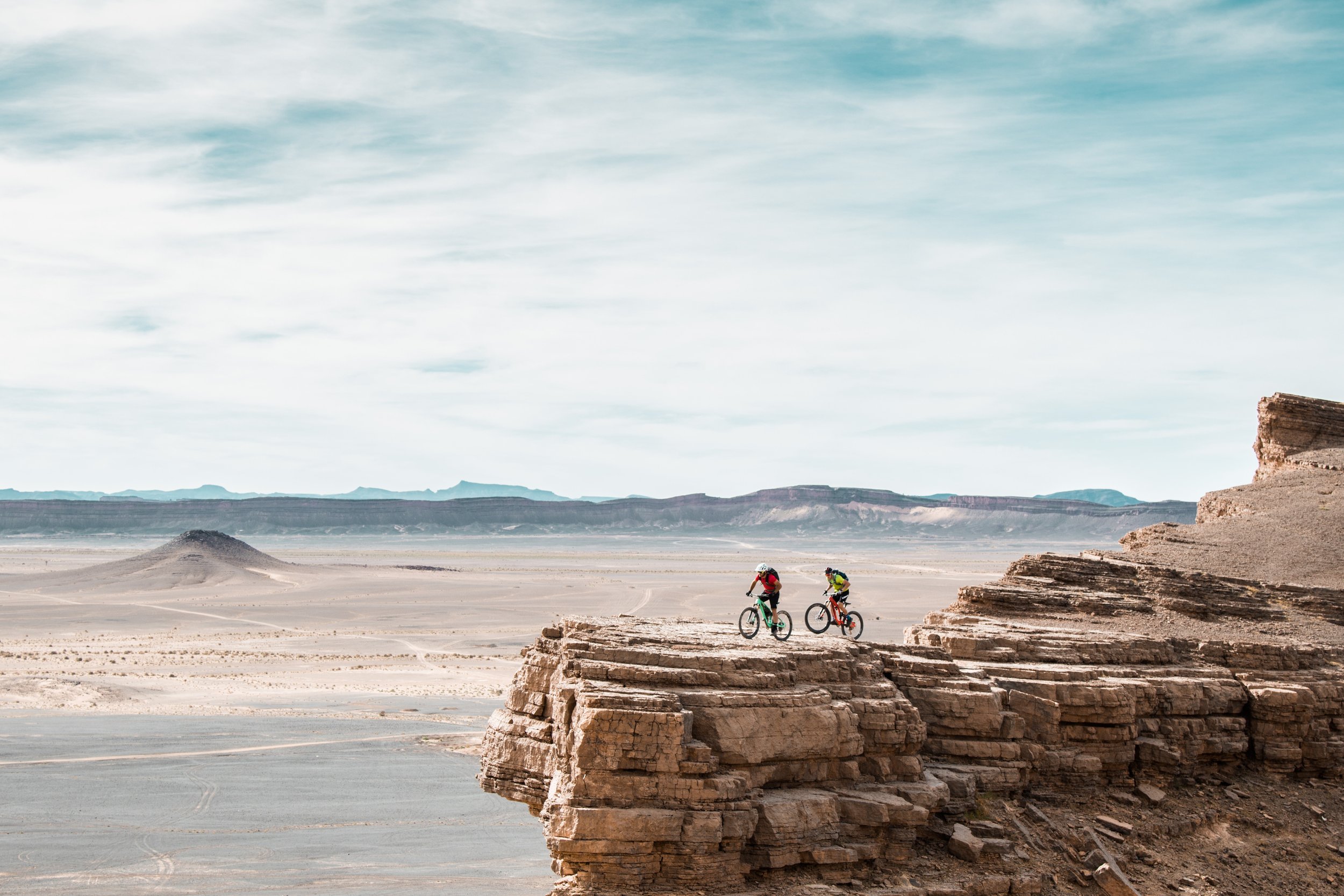




After exploring the medina and picking up some fruit and cheese, we loaded the bikes into the car and in just over three hours, we arrived in Chefchaouen, the iconic Blue City and final stop of our journey. We soaked in the charm of the narrow streets painted in every shade of blue. The city is known for its endless staircases, so naturally, we made the most of them—riding down and giving the locals and tourists an unexpected show.
While wandering through the center of Chaouen, we found a small shop selling traditional Moroccan ceramics. We each bought a few pieces to remember this trip by.
Pol and I: “Looking back at our Morocco adventure, there’s honestly nothing negative we could say. It’s been an unforgettable experience, traveling with our Orbea Rallon and Orbea Occam AM bikes. And now… we’re already planning the next one—which will be just as epic, or maybe even more. So... where to next?”
